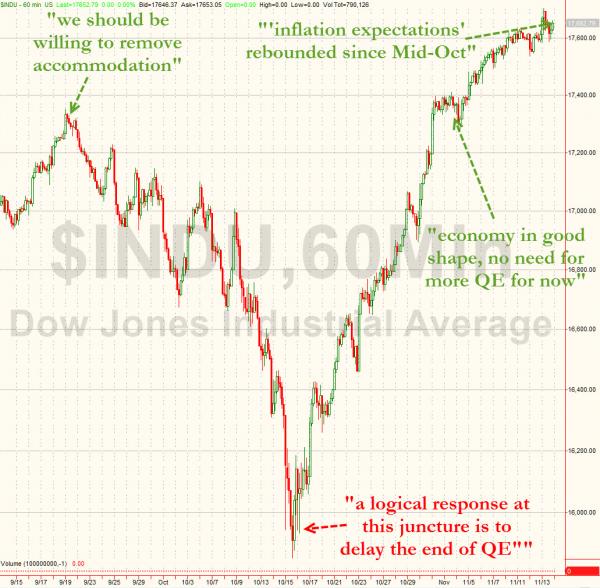Curious why, even as many were expecting at the time, the Fed decided against commenting on the October market swoon? Here is the answer, in the Fed’s own words:
… members considered the advantages and disadvantages of adding language to the statement to acknowledge recent developments in financial markets. On the one hand, including a reference would show that the Committee was monitoring financial developments while also providing an opportunity to note that financial conditions remained highly supportive of growth. On the other hand, including a reference risked the possibility of suggesting greater concern on the part of the Committee than was actually the case, perhaps leading to the misimpression that monetary policy was likely to respond to increases in volatility. In the end, the Committee decided not to include such a reference.
In other words, the Fed refused to admit that all its cares about is record high stocks volatility.
And when the Fed says it didn’t want to “suggest greater concern on the part of the Committee than was actually the case” regarding a tumbling stock market, that means that Bullard’s hint on QE4 the day the DJIA plunged 500 points and the 10 Year flash crashed… never happened right?

Or maybe, just maybe, the humiliated Fed, caught offside by Bullard’s verbal faux pas, is actually serious this one time especially considering the FOMC took place after the Bullard bull in a china store jawboning, in which case the one word to focus on in the following most important line:
… the misimpression that monetary policy was likely to respond to increases in volatility…
is “misimpression” as it means the next time Vol surges, the Fed will not be there to save the BTFDers.














Leave A Comment